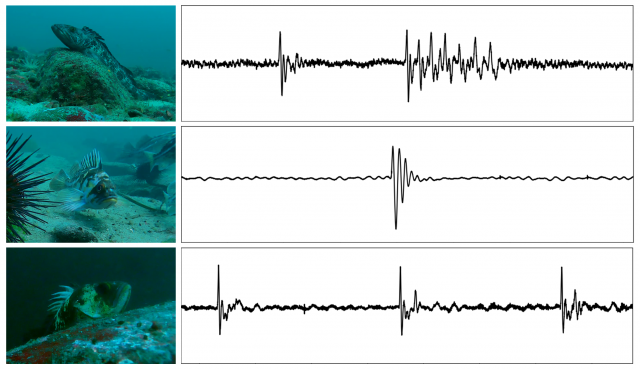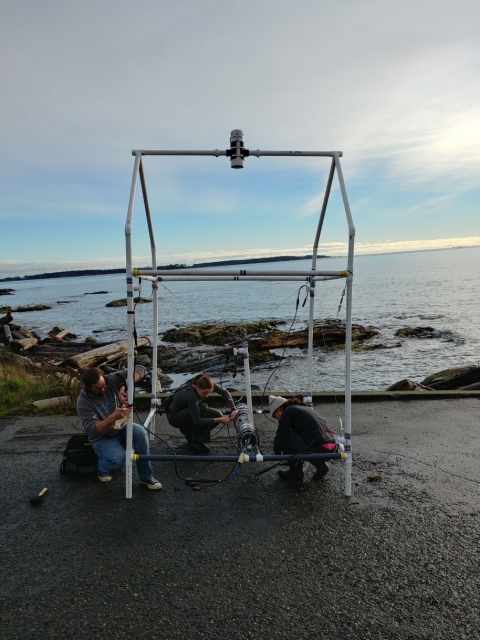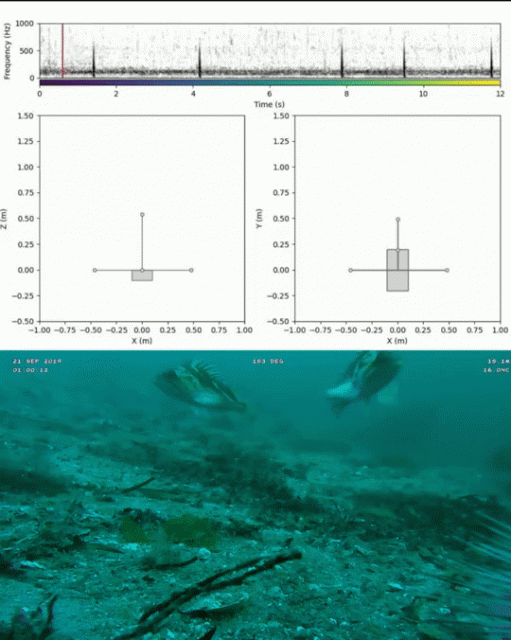Most people don’t realize it, but fish make a variety of sounds…on purpose! This makes sense as it is often hard to see underwater, but sounds are transmitted quite well. Xavier Mouy is a Ph.D. student and colleague of mine at the University of Victoria, Canada. He is tackling the challenging task of documenting which species make which sounds. Turns out you need scuba divers to do this, and that where we (myself and fellow student Kieran Cox) come in. I invited Xavier to write a guest post to explain this all better than I could and he generously agreed…
The BC Fish Sound Project
“Prrrrr… thump… thump… brrrrr…”, these are the sounds you can hear in the coastal waters of British Columbia. Sounds the fish can make to scare away predators or attract mates. Yes, you read correctly, fish make sounds! And it has been known for a very long time. Aristotle was already describing these intriguing sounds in the 4th Century BC. Despite this, we still don’t know very much about the different types of sounds fish make and what they use them for.

What different species calls look like
Currently, we know that about 800 species of fishes worldwide produce sounds. Among the approximately 400 known marine fish species frequenting the waters of British Columbia, only 22 have been reported to produce sounds so far. It is believed that many more of these species produce sounds, but their acoustic repertoires have not been identified yet and this is exactly what this project is about: Exploring the coastal waters of British Columbia to record and identify the sounds produced by the various fish species frequenting these waters.
Why do we care?
The fish sound catalog we are building will allow us to monitor fishes over long time periods and large geographic areas in a completely non-intrusive manner, just by listening to the ocean. Very much like what is done with whales. This will constitute an important tool for marine conservation and fisheries management.
How are we doing this?
Fish don’t behave the same in a fish tank as in the wild. This is why we record fish sounds directly in their natural environment. To catalog fish sounds we need hydrophones to record sounds and cameras to visually identify the species making them. But what if a fish is making sounds outside the field of view of the camera ? Well, this could be a problem… When we see a fish on the camera, we need to make sure that it is the one making the sounds. This is where the passive acoustic localization comes in. Imagine yourself in a busy street of a city. Now close you eyes and listen…. The jackhammer across the street from the construction workers, the siren of the ambulance passing by, the bird chirping away above your head, a baby crying in a stroller behind you. Even though you can’t see them, you know precisely where all these sounds come from. And all of this is because your ears are few centimeters apart and don’t receive the sounds exactly at the same time. Only a few microseconds…but this tiny difference is enough for your brain to find out where the sound comes from. For our fish sounds, we can use the same principle, except that we use hydrophones instead of our ears and that we are not limited to 2! The more hydrophones you use, the more accurate the localization. Due to the complexity and the diversity of fish habitats, two different instrument systems are used. For areas with a relatively flat seafloor, we developed the eXperimental Audio and Video (XAV) array, which is an autonomous array composed of 6 hydrophones and 2 underwater cameras. This fixed system is deployed on the seafloor for up to 10 days at each location.

Jessica Qualley, Katie Inness, and Xavier Mouy assembling the XAV array before deployment.

Yellowtail Rockfish swimming through the XAV array deployed in 10m of water at Odgen Point breakwater, Victoria, B.C.
For steep seafloor slopes and complex habitats such as boulders, we will use a SOFAR Trident underwater drone fitted with 4 hydrophones. This mobile platform will be employed for short-term missions (a few hours).
It takes a village…
From the engineering of the instruments, selection of the study sites, deployment of the instruments, to the analysis and interpretation of the data, this project touches on many research fields. This is why we need an interdisciplinary team to make this project succeed. Stan Dosso (UVic), an expert in underwater acoustics, helps with the data processing and acoustic localization. Francis Juanes and Rodney Rountree (UVic) both bring their knowledge on fish behaviour and ecology. Jessica Qualley (UVic) is the wonder woman of the Juanes lab. She makes things happen: from driving the boat, to pick up equipment to organizing the logistics, she is on top of everything. Finally, Morgan Black and Kieran Cox (both UVic and Hakai Institute) bring their tremendous experience in fish biology and scientific diving. They both help decide the deployment locations based on their knowledge of the fish and their habitat, help identify the fish recorded in the videos and lead all the diving operations. Without them, the XAV array just couldn’t be deployed. I feel extremely privileged to work with so many skilled and fun people.

Yup, that’s me …you can tell by the red hair :). Nick Bohlender is helping me with final checks.
Some exciting results and a great paper. Find out more at here.

Pinpointing where the noise comes from in three dimensions to confirm who is saying what
